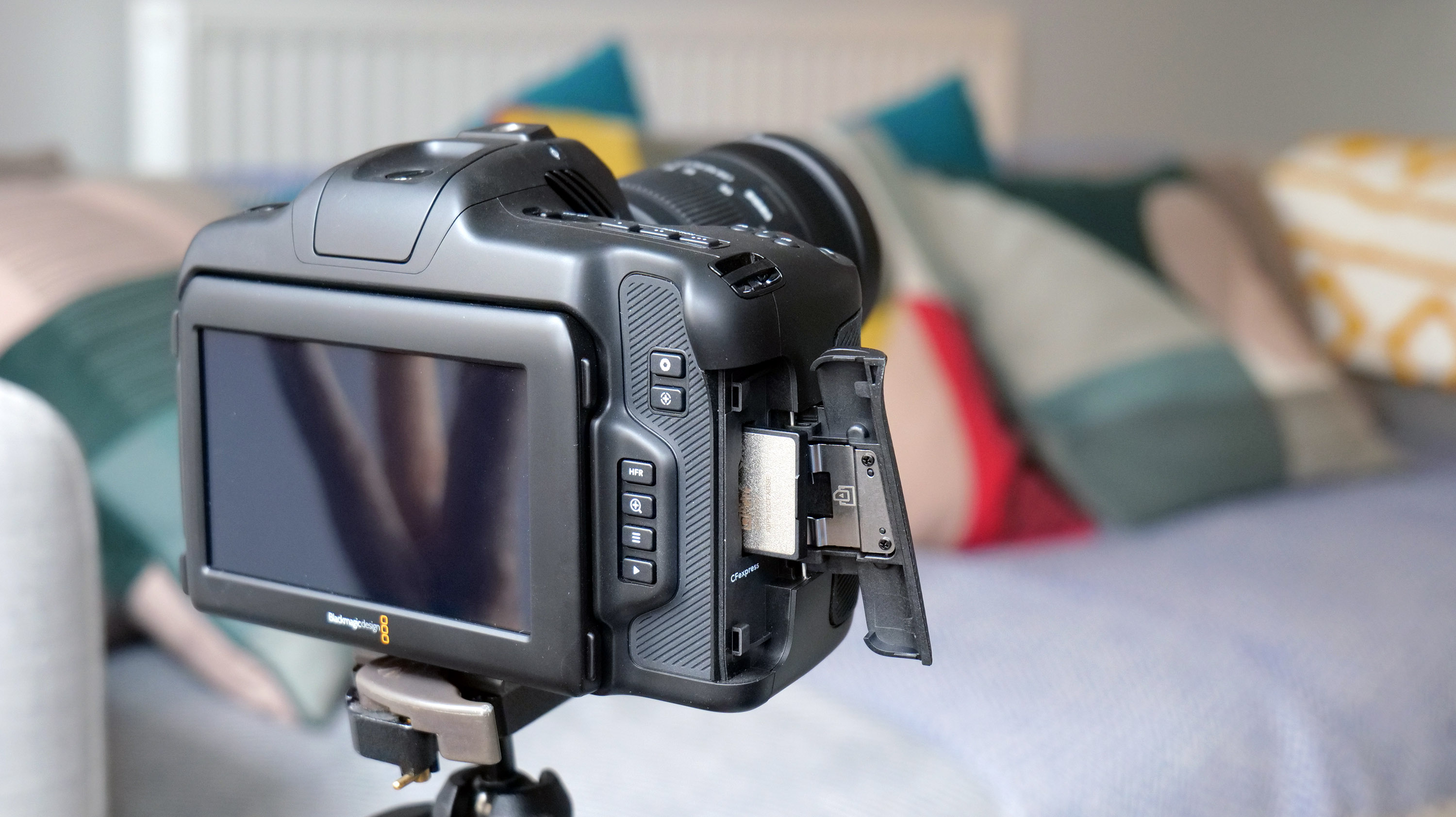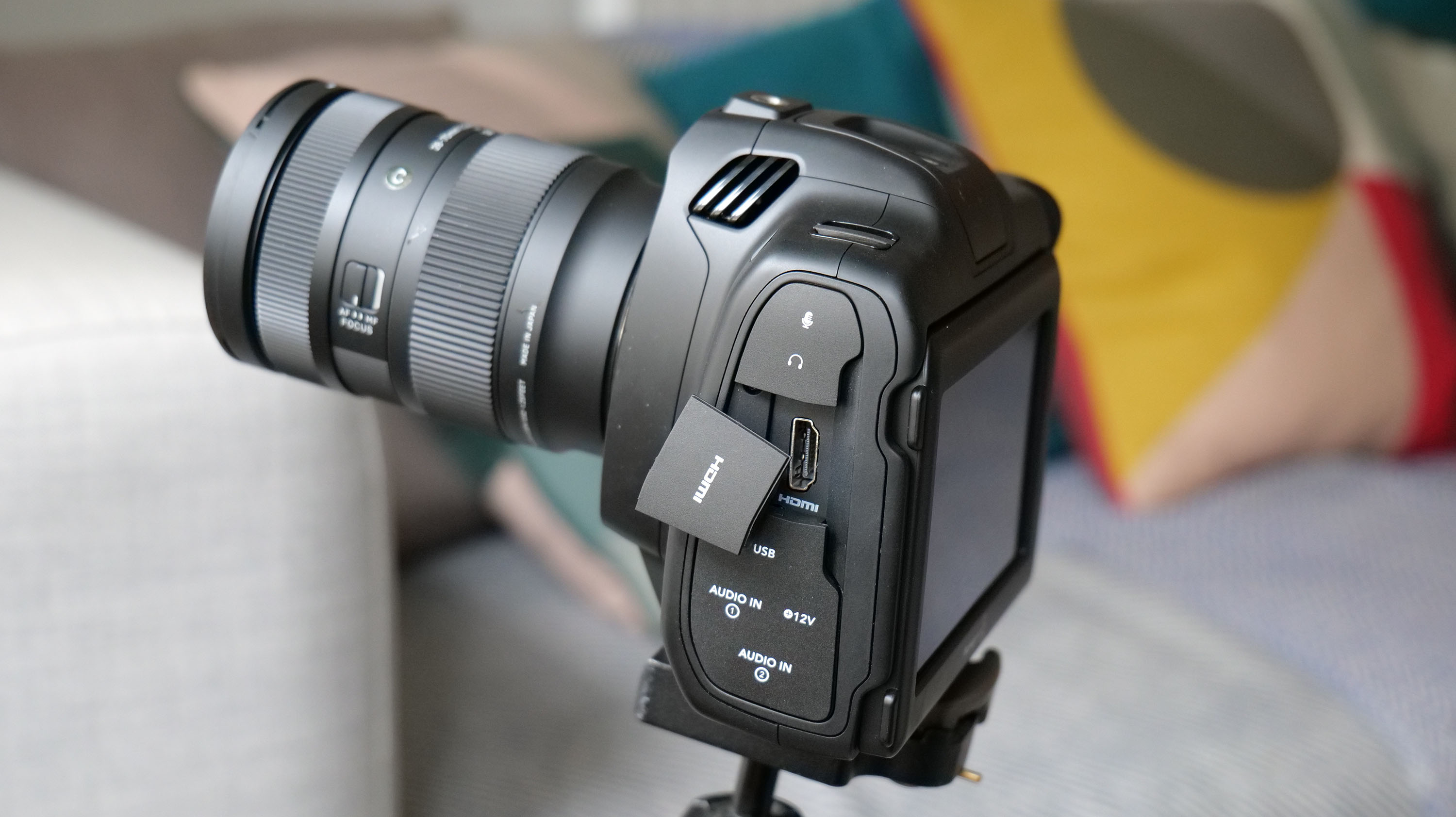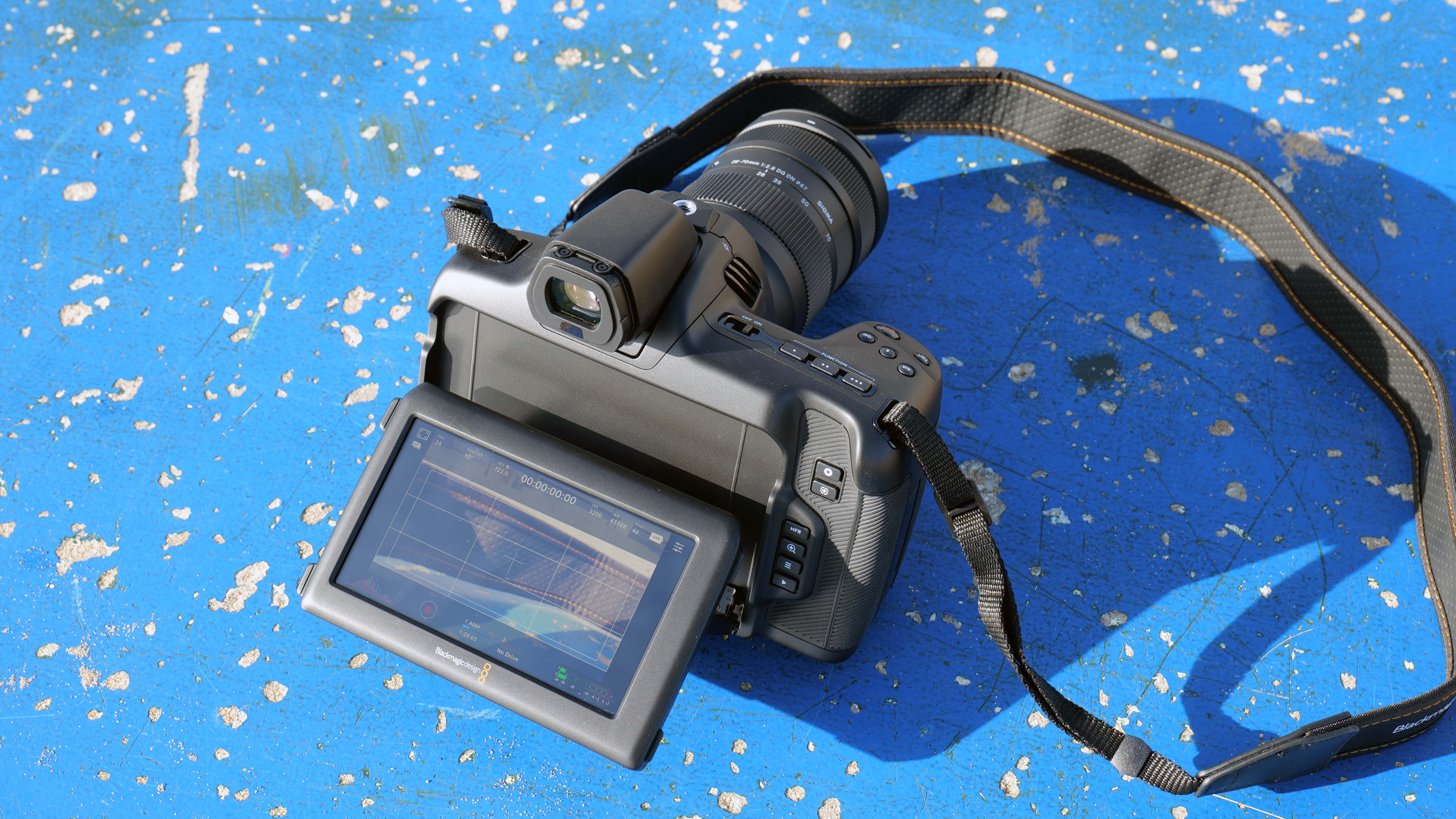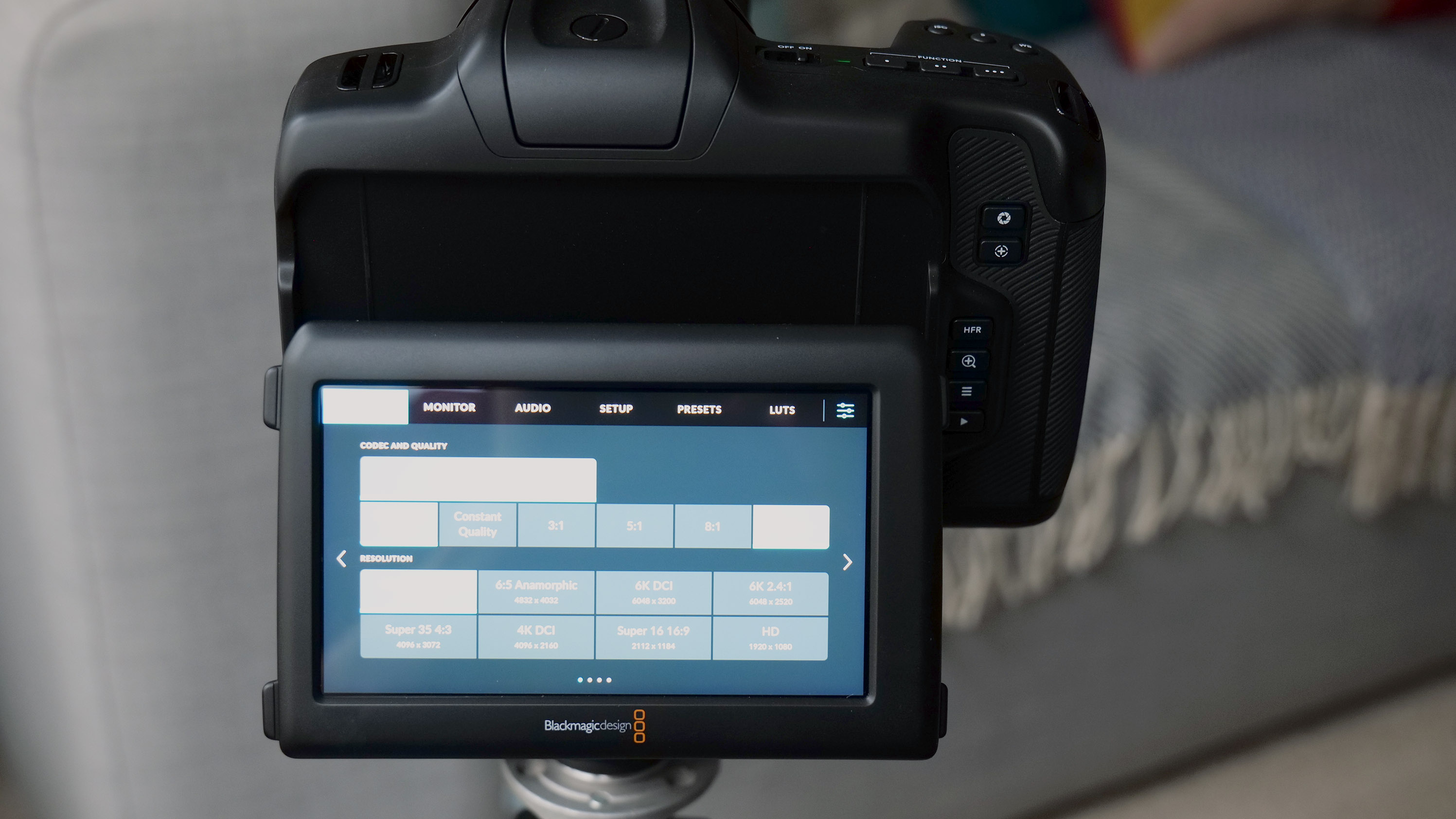TechRadar Verdict
Like its predecessors, the Blackmagic Cinema Camera 6K isn’t for everyone; it lacks a lot of the niceties we've come to expect in a handheld mirrorless camera and requires users to have a high degree of knowledge about video editing to get the most out of it. But while most consumers would be better off buying a more flexible, user-friendly camera from one of the major manufacturers, there’s no doubting the capabilities of the Cinema Camera 6K when it comes to providing raw footage. Seasoned filmmakers will also adore its slick workflow and low-light capabilities.
Pros
- +
Superb 6K quality from a relatively small and affordable body
- +
Compatible with wide range of L-Mount lenses
- +
Effective gyro data stabilization in post-production
Cons
- -
No built-in ND filters
- -
No tracking AF or in-body image stabilization
- -
120fps requires dropping to 1080p resolution
Why you can trust TechRadar
Blackmagic has long been a proponent of making high-quality filmmaking gear and software accessible to non-professionals – the company’s Pocket Cinema Camera range has been the main exemplar of this approach. Affordable and (relatively) compact, these cameras offer workflow-friendly features, XLR mic inputs, and Blackmagic’s own RAW codec.
The Blackmagic Cinema Camera 6K (the ‘Pocket’ appellation has been dropped, despite the fact that the camera body design and size remain the same as previous models) is the latest model in the range and the first to offer a full-frame sensor, which it teams up with an L-Mount lens mount.
That promises improved low-light performance, plus the ability to shoot 6K footage ‘open gate’ (i.e. using the entire surface of the sensor) – new capabilities that push the Cinema Camera range in fresh and exciting directions.

That being said, it also comes with some disappointments. Unlike the Pocket Cinema Camera 6K Pro, there are no built-in ND filters. In addition, that camera’s ability to shoot 4K at 120fps has been downgraded here, forcing those who want high frame-rate footage to drop the resolution to plain old Full HD 1080p.
It also comes with fewer convenience features than most mirrorless cameras, missing the likes of tracking autofocus and USB power supply. Pros flush with gear and accustomed to manual focusing likely won’t mind too much about those things. However, aspiring newcomers to filmmaking may feel a little out of their depth when they pick this up for the first time.
Even so, the Cinema Camera 6K delivers a heck of a lot for its price, particularly when it comes to image quality – and that, for filmmakers, will almost certainly trump any usability shortcomings, making it one of the best video cameras for the money.
Blackmagic Cinema Camera 6K: release date and price
- Body only list price: $2,595 / £2,199
- Optional EVF costs: $495 / £485
- Optional battery grip costs: $149 / £135
The Cinema Camera 6K is available right now with a list price of $2,595 / £2,199. That seems like an accessible price for a full-frame cinema camera capable of 6K recording and equipped with high-quality XLR microphone inputs. This sort of bang-for-your-buck affordability is typical of Blackmagic’s Pocket Cinema Camera (now apparently just Cinema Camera) range. Of course, that doesn’t include two things you’ll need: an L-Mount lens and a CFexpress card.
Sign up for breaking news, reviews, opinion, top tech deals, and more.
Blackmagic offers a pair of optional accessories in the form of a $149 / £135 Battery Pro Grip (which can incorporate an additional battery and thus extend shooting time) and the $495 / £485 EVF, a high-quality electronic viewfinder.
Also worth mentioning is that, as with previous Blackmagic Cinema Camera models, the Cinema Camera 6K includes a license for Blackmagic’s superb DaVinci Resolve 18 Studio video editing software. This costs around $295 / £260 if purchased separately, so could represent a huge bonus for anyone who needs a high-quality editing platform.
Price score: 4/5
Blackmagic Cinema Camera 6K: features and performance
- CFexpress Type B card slot
- 1x 3.5mm and 2x mini XLR microphone inputs
- Gyroscopic data for post-production image stabilization
The Cinema Camera 6K’s large sensor requires a suitable lens format, which it gets in the form of L-Mount, the 51.6mm-diameter bayonet system co-developed by Leica, Panasonic, and Sigma. Despite L-Mount only being introduced in 2018, there are currently over 50 full-frame lenses available from the three founding manufacturers, plus adapters that allow the fitting of hundreds, if not thousands, of third-party lenses. Users of this camera will enjoy plenty of choice when it comes to creating different looks and fields of view.
Onboard recording is to CFexpress Type B cards, which are fast, robust, and relatively capacious. I was sent a couple of 256GB cards with my review sample of the Cinema Camera 6K and found that I could fit roughly an hour of 6K footage on it. Interestingly (and quite annoyingly), I also found that I had to remove the card and insert it into a card reader to get the footage onto a computer, as the Cinema Camera 6K’s USB-C 3.1 port doesn’t support this type of direct connection.
The USB port does, however, support an external recorder, so users can connect an SSD or flash drive to the camera and record directly to that. It can also be repurposed as an Ethernet connection with the right adapter, allowing for remote network control of the camera (something I wasn’t able to test out).

Another feature I was expecting the USB port to cover is power supply, as is the case on most mirrorless cameras these days. But no dice. For constant power supply, there’s a 12V DC input, which will probably suit filmmakers who already have the required gear but isn’t too friendly to less well-equipped newcomers. The USB does, however, support internal battery charging via a power bank, albeit only when the camera power is turned off.
Other connectivity includes a full-size HDMI monitor output (which supports a 1080p/60fps cleanfeed – it’s not intended for external recording), a 3.5mm headphone input, and two types of mic input: 3.5mm and 2x Mini XLR. You don’t see many mirrorless cameras with XLR included (those that do support it require an adapter), so this is one area where Blackmagic’s cinema camera focus shows itself very clearly. There’s also an integrated stereo microphone, which records from either side of the lens mount.
Battery life is respectable. I got around an hour of 6K RAW recording out of a full charge but, for longer shoots, I suspect a few extra NP-F570s will be required. They cost around $55 / £45 apiece.

One thing potential buyers should note is that, like other Blackmagic cameras, the Cinema Camera 6K lacks some of the usability features seen in hybrid photography/video cameras from the likes of Sony, Panasonic, Canon, et al. There’s no built-in image stabilization here (although it will embed gyroscope data in footage, allowing you to easily and effectively stabilize footage in post-production) and no tracking autofocus, while stills shooting capabilities are rudimentary at best. You can hit a dedicated button to capture a still photo, but it comes out of the camera as a Blackmagic RAW file rather than a JPEG and is, to all intents and purposes, a single frame of video (at the equivalent of 24.6MP).
Features and performance score: 3/5
Blackmagic Cinema Camera 6K: design
- 180 x 94 x 122mm in size and 1.135kg in weight
- Tilting 5-inch 1080p touchscreen
- Viewfinder is a pricey optional extra
The Cinema Camera 6K’s design closely follows its Pocket predecessors, to the extent that it’s almost impossible to tell the difference. It’s constructed from hard plastic and is vaguely DSLR-like in shape, thanks to a huge hand grip, rear screen, and central ‘bulge’ right behind the lens mount. It's significantly wider than most mirrorless bodies and, at over a kilo without a lens attached, fairly hefty too. Even so, I never found it particularly awkward to use, thanks to a clever control layout and (with a Sigma 28-70mm zoom lens attached) well-balanced body. The thick camera strap included helps too.
The physical buttons are well positioned to be accessible to fingers/thumbs easily, and well labeled to boot. Four of them are user-customizable (three function buttons and the autofocus button), and the touchscreen also provides an excellent UI menu allowing deeper settings changes and the like. The UI is geared towards filmmakers, as you’d imagine, and doesn’t follow the conventions of hybrid mirrorless cameras, but, after a bit of adjustment, I found everything easy to find and quickly tweak.

The aforementioned central bulge is where you’d find a viewfinder on most mirrorless models, but Blackmagic doesn’t include one here. If you want a viewfinder you’ll have to shell out $495 / £485 for the optional extra (which I was sent and is excellent), but in most circumstances, the screen, which is brighter, sharper, and much larger than the 3-inch displays on most mirrorless cameras, will do the job nicely. The screen tilts up 180º and down 47º but won’t flip out or up to face forward or sideways, sadly.
Other notable design features include a front-facing tally lamp to indicate in-progress recording, and tripod mounting points on the bottom (two here) and top, which can also be used for attaching accessories.
Design score: 3.5/5
Blackmagic Cinema Camera 6K: image and video quality
- 6048 x 4032 open gate recording
- 400 and 3200 dual native ISO
- 12-bit Blackmagic RAW video codec
Video performance is where the true value of the Blackmagic Cinema Camera 6K reveals itself. The camera records all footage in a proprietary 12-bit Blackmagic RAW codec, offering up to 13 stops of dynamic range, and supports a variety of resolutions from 6048 x 4032 (a 3:2 ratio open gate format) at up to 36fps to 1920 x 1080 at up to 120fps. It also features dual native ISO of 400 and 3200, which means low light footage should be better than on previous Pocket Cinema Cameras.
I played around with a variety of resolutions, frame rates, and ISO settings and was never less than satisfied with the results – once I’d color graded and corrected them in DaVinci Resolve 18, that is. Footage looks flat and unexciting before LUTs and grading are applied, but leaps to life after a few minutes of tweaking – and the huge amount of sensor information stored in the camera’s 12-bit files allows for a lot of tweaking indeed. Even when recording video at night, with scenes lit only by lampposts and shop signs, I was able to achieve gorgeous-looking results relatively easily – and I’m far from an accomplished cinematographer. In the hands of one, I don’t doubt that the Cinema Camera 6K could deliver results that are truly worthy of the cinema screen.

Of course, not all content is being made for cinema screens, and the open gate recording option is a welcome feature, as it allows you to shoot a scene then crop it in various different formats for different platforms after the fact; you can even create 9:16 social media with ease using this method.
Video quality score: 5/5
Blackmagic Cinema Camera 6K: test scorecard
| Row 0 - Cell 0 | Notes | Score |
| Price | Not cheap, but a good price for the spec | 4/5 |
| Design | Larger than most mirrorless cameras | 3.5/5 |
| Features and performance | Missing some usability features you might expect | 3/5 |
| Video quality | Impeccable 12-bit clips with fantastic editing potential | 5/5 |
Should I buy the Blackmagic Cinema Camera 6K?

Buy it if...
You want superb cinema footage from a handheld
Blackmagic’s excellent 12-bit codec and workflow design are perfect for serious filmmakers demanding impeccable raw video quality.
You need to shoot in low available light
The big sensor and dual native ISO make this the best of the Cinema Camera range when it comes to capturing clean footage in dark conditions.
You’re operating on a tight budget
The camera’s asking price is low for the video spec, and you can pick up L-Mount lenses fairly cheaply too.
Don't buy it if...
You want a video-first hybrid camera
The Cinema Camera 6K is next to useless for still photography, plus lacks user-friendly features like tracking autofocus and in-body stabilization.
You don’t know how to color grade and correct
Unlike with some mirrorless cameras, the raw footage from this camera needs to be properly honed in a video editing program to look its best.
You’re expecting a small, lightweight camera
Despite being a handheld camera, this thing gets chunky very quickly once you factor in a lens and accessories like microphones and ND filters.
How I tested the Blackmagic Cinema Camera 6K
I was sent a Cinema Camera 6K along with a viewfinder, battery grip, memory cards and 28-70mm Sigma lens. I used them all inside and outdoors over a period of several days to shoot footage in bright and low-light situations. I also used a Panasonic 85mm prime lens that I already had for more shooting, then edited and graded all my raw footage using DaVinci Resolve 18 Studio software.
First tested November 2023

Sam has been writing about tech and digital culture for over 20 years, starting off in video games journalism before branching out into the wonderful worlds of consumer electronics, streaming entertainment and photography. Over the years he has written for Wired, Stuff, GQ, T3, Trusted Reviews and PC Zone, and now lives on the Kent coast in the UK – the ideal place for a camera reviewer to ply their trade.
